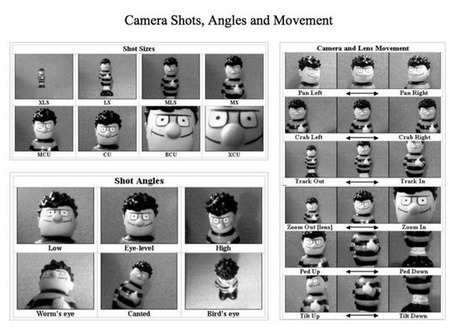Character
What can you tell about a character by the way they look? Costume, hair and make up are all used to add to the actor’s performance. A character’s behaviour gives us clues about their thoughts and feelings.

Settings
Stories can be set in real places or fantasy worlds, in the past, present or future. When characters are introduced to a new setting it can change their behaviour and influence their personaility.
Narrative
Many stories follow the same basic structure – beginning – middle – end > normal – problem – new normal > equilibrium – disruption – new equilibrium (resolution)
Colour and light
Colour and light are used to create mood. Shadows and dark can create a gloomy atmosphere whereas a bright colourful scene can create a happier mood. Light can also focus our attention on details in a scene. Colour can represent a character’s emotions.
Music and sound
A film’s soundtrack is as important as the things you see on the screen. Music, sound effects and moments of silence can help create suspense, excitement and laughter. Audiences can often tell if characters are good or bad according to the diagetic and non diagetic sounds which have been added.
Camera and editing
Shot types and camera angles are carefully chosen to show points of view and focus the audience’s attention. An editor’s job is to sequence each shot so the story is engaging and easy to follow.
Use these key facts to think again about the film we have been studying.
How were these all used to:
- create the narrative structure
- make stereotypical heroes, villains etc
- appeal to target audiences
- make a profit?





